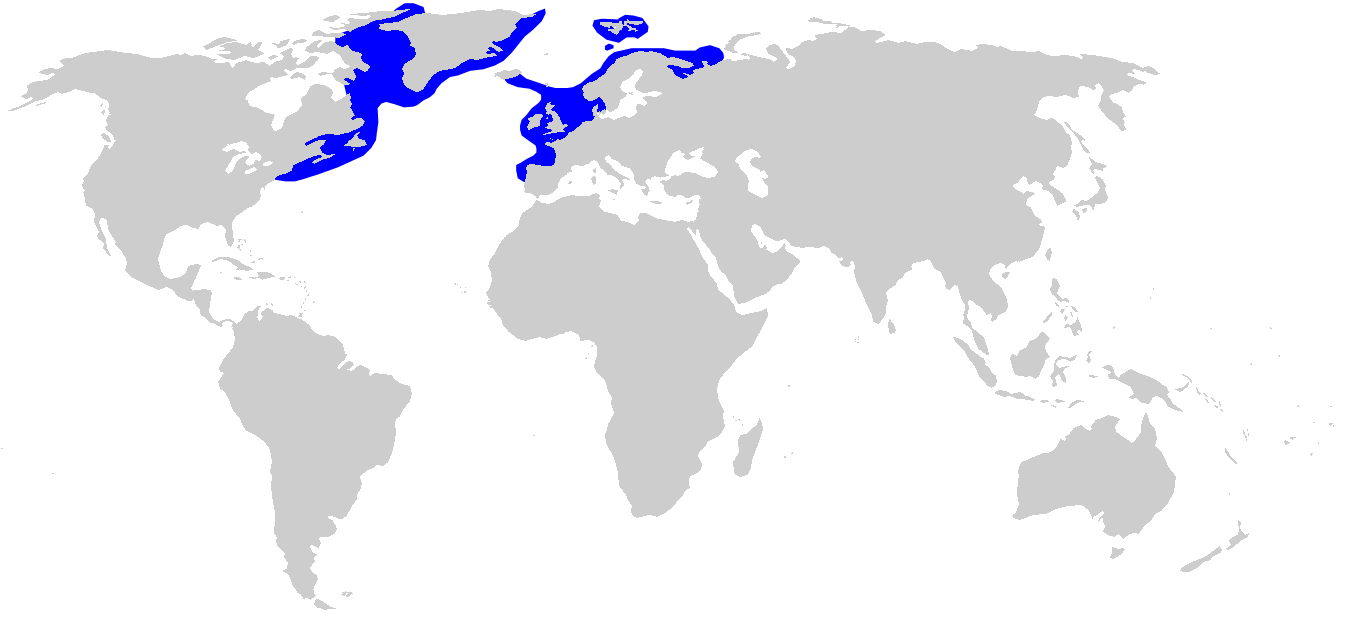Greenland sharks: the longest living vertebrate?

Greenland shark, Somniosus microcephalus of the family Somniosidae ("sleeper sharks"), is one of the largest living species of shark living on earth. Their distribution is mostly restricted to the waters of the North Atlantic Ocean and Arctic Ocean. It is characterized by its large, heavy-set body which gives it a sluggish appearance and movement. It has a short, rounded snout, thin lips, and very small eyes. The dorsal and pectoral fins are very small, and it lacks spines in its dorsal fins. The gill openings are very small in comparison to its size and are located low on the sides of the shark"s head. The Greenland shark varies between a black, brown, and grey colour. Although the shark is usually uniform in colour, it may often be marked with dark lines or white spots along its back and sides.[1] They can grow to 6.4 m (21 ft) and 1,000 kg.[2]
In the 1930s, a fisheries biologist discovered that these sharks grow only about 1 cm a year. Yet scientists had been unable to figure out just how many years the sharks last. Now a recent study published in science[3] reveals an estimate about their age.[4]
For many fishes, the age can be examined by counting patterns of concentric rings seen inside otoliths, which are calcified structures seen inside ears. Many sharks like Great Whale have calcified tissue that grows in layers on their back bones can be used to determine their age. But the Greenland shark is a very soft shark - it has no hard body parts where growth layers are deposited. So it was believed that the age could not be investigated.
In the recent study, scientists employed radio carbon dating of eye lens protein to estimate the age of these sharks. In vertebrates, eye lens nucleus is composed of metabolically inactive crystalline proteins. These proteins in the centre are formed during prenatal development. Thus eye lens nucleus retains the proteins formed when the shark was still inside the mother’s body. So the presence of radioactive isotopes like C-14, N-15 etc. represents the isotope signatures of the diet of shark’s mother.
Now they employed a novel technique, they looked for ‘bomb pulse’ signatures in eye lens proteins of these organisms. Nuclear bomb testing in 1950s left behind high amounts of C-14 in earth’s surface and it infiltrated ocean ecosystems in early 1960s. This period of rapid radiocarbon increase is a well-established time stamp for age validation in marine animals and is called a ‘bomb pulse. The idea is that, bomb pulse can be detected in the eye lens of sharks, which can be attributed to a particular period.
Of the total 28 sharks collected, two – both less than 2.2 meters long, were born after 1960s and one small was born around 1963. Then the research team used these dated sharks to create a growth curve, keeping the fact that new-born Greenland sharks are 42 cm long. Moreover, these sharks grow only about 1 cm a year. Then they correlated the radiocarbon dates with shark length to calculate the age of collected sharks.
The oldest shark was estimated with an age of 392 ± 120 years. It was also estimated that the sexual maturity would be achieved by 156 ± 22 years (reported sexual maturity at lengths >400 cm). This places Greenland shark as the longest lived vertebrate recorded. The next oldest recorded vertebrate is the bowhead whale (Balaena mysticetus), at 211 years old.[5]
The study reveals that the life expectancy of Greenland sharks is exceeded by only one marine bivalve, Ocean quahog (Arctica islandica) at 507 years. The long life expectancy and reproductive maturity makes the survival of these species vulnerable and conservation efforts are important to keep this population from disappearing.
Photos & Video courtesy: Julius Nielsen
[cite]
Comments
Post a Comment